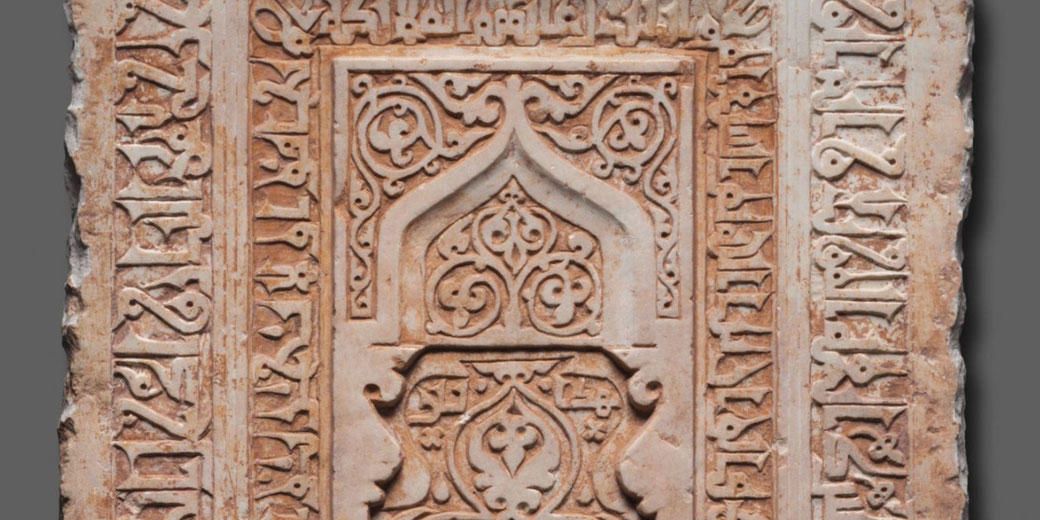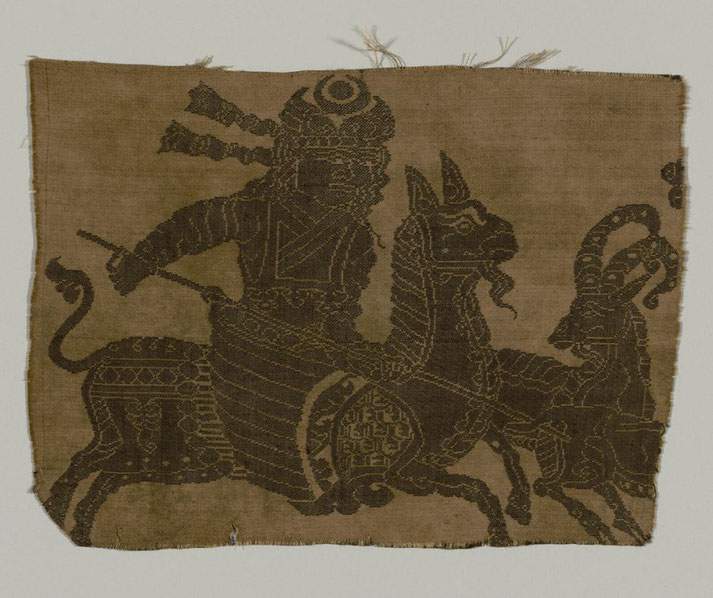Who were the Seljuk Turks?

Rising from the arid plains of the steppes, a modest Turkic tribe would become one of the most powerful rulers of Persia, Mesopotamia, and Anatolia.
They were led by ambitious leaders who overcame rival empires and built a kingdom that fostered a vibrant culture, guided by Persian influences and Islamic scholarship.
Yet, even the mightiest empire was not immune to decline. Internal strife, succession disputes, and the pressures of relentless wars would ultimately unravel their grand empire.
Where did the Seljuks come from?
The Seljuks were a Turkic people that originated from the vast steppes of Central Asia.
They were descended from the Oghuz tribes and their early life revolved around the practices of a nomadic society.
Living in yurts, herding livestock, and honing their skills in archery and horseback riding, they survived in the harsh realities of the steppe.
By the early 10th century, these Turkic tribes encountered the powerful influence of Islam that reshaped their spiritual life.
In particular, the conversion of many Oghuz Turks, including the ancestors of the Seljuks, opened new paths and alliances, which deepened their connection to the Islamic world.
Around the middle of the 10th century, their leader, ‘Seljuk’, and his followers moved westward into lands controlled by the Khwarazmian Empire, eventually settling along the banks of the Syr Darya River.
Here, they cemented themselves as an influential and organized group, distinguishing themselves from neighboring tribes.
By the 11th century, the Seljuks saw the expanding borders of the Abbasid Caliphate, whose authority had weakened after years of internal conflicts.
They recognized a unique opportunity to carve their own place in these contested lands, where both Byzantine and Muslim powers fought for control.

Under the leadership of Seljuk’s grandson, Tughril Beg, the Seljuks ventured further into Persia, and, in 1037, Tughril declared his independence from the Ghaznavid dynasty after a successful campaign in Nishapur, a vital city that lay along the Silk Road.
Soon, Tughril captured the city of Rayy, which became the Seljuk capital, which gave them control over key trade routes.
In 1055, Tughril achieved a significant milestone by entering Baghdad, where he liberated the Abbasid Caliph from the influence of Shi’a Buyid emirs who previously dominated the city.
The Caliph, eager to regain influence over the Sunni world, bestowed the title of sultan upon Tughril, an honor that formally established him as the protector of Sunni Islam.
This title elevated the Seljuks from powerful nomads to recognized rulers within the Islamic world.
It also cemented their alliance with the Abbasid Caliphate, which would provide religious legitimacy to their rule.
Tughril’s conquest of Baghdad was the beginning of the Great Seljuk Empire, a domain that would expand across Persia, Syria, and Anatolia, influencing both the Islamic world and the Christian Byzantine Empire.
The spread of the Seljuk Empire
Following Tughril’s death in 1063, his nephew Alp Arslan continued the expansion with a singular focus on securing the empire’s western frontier.
Alp Arslan recognized the value of Anatolia as a buffer against the Byzantine Empire, which posed a recurring threat to the Seljuks.
In 1071, Alp Arslan achieved a decisive victory over Emperor Romanos IV Diogenes at the Battle of Manzikert.
His forces captured the Byzantine emperor and effectively weakened Byzantine control in Anatolia, opening the door for further Turkish settlement.
Under Alp Arslan’s successor, Malik Shah, the Seljuk Empire reached its peak, expanding its territories into Syria and parts of the Levant.
Malik Shah relied on the guidance of Nizam al-Mulk, an experienced Persian vizier whose administrative reforms and establishment of madrasas—Islamic schools—strengthened Seljuk authority across their territories.
Malik Shah’s campaigns succeeded in consolidating vast regions under Seljuk control, from Persia to the Mediterranean, where he reinforced key positions to secure access to trade networks and exert influence over neighboring territories.
Further south, the Seljuks extended their reach into Syria and the Levant, where they encountered both local Muslim rulers and the remnants of the Fatimid Caliphate.
In 1076, the Seljuks captured Damascus, a prosperous city that served as a vital commercial and cultural hub.
This expansion into Syria also allowed the Seljuks to exert control over the Holy Land, a factor that contributed to growing tensions with Christian powers.
How did the Seljuks rule their empire?
In organizing their administration, the Seljuks relied heavily on experienced Persian bureaucrats who brought a well-developed system of governance that had been honed over centuries.
The Seljuks adopted Persian administrative models. As such, the Persian officials, who were often educated in statecraft and Islamic law, filled crucial positions within the empire, including roles as viziers and tax collectors.
Under the supervision of vizier Nizam al-Mulk, who served during the reigns of Alp Arslan and Malik Shah, the Seljuk state became a highly organized entity.
Nizam al-Mulk established a structured bureaucratic system that divided the empire into provinces, each managed by loyal officials who oversaw tax collection, judicial matters, and military recruitment.
This system ensured that revenue flowed steadily to the central administration, supporting both the military and public works projects across the empire.
Thanks to these revenues, the Seljuks funded impressive architectural projects, creating structures that expressed the empire’s power and devotion to Sunni Islam.
The Great Mosque of Isfahan, constructed during Malik Shah’s reign, featured a grand courtyard surrounded by four towering iwans, or vaulted halls, a design that became the peak of Islamic architecture in Persia and beyond.
Artisans decorated the mosque with intricate tilework and geometric patterns. In cities like Nishapur and Rayy, other mosques, palaces, and caravanserais rose, each constructed with a blend of Persian and Islamic elements that reflected the Seljuks’ cultural ideals.
In addition to architecture, the Seljuk Empire became a center for scholarship, attracting scholars, scientists, and poets whose works enriched Islamic knowledge.
Islamic colleges across the empire supported the study of theology, law, and philosophy, particularly the works of past Islamic thinkers and Persian scholars.
Nizam al-Mulk himself founded the Nizamiyya schools, which became models for higher education in the Islamic world.
These institutions educated future bureaucrats, judges, and religious scholars. The study of astronomy, medicine, and mathematics also flourished, as scholars from across the empire exchanged ideas in major centers like Baghdad and Isfahan.

The Seljuks and the Crusades
In the years leading to the First Crusade, the Seljuks had already established themselves as a powerful force in the Middle East.
However, their expansion into Byzantine territories brought them into direct conflict with the Christian Byzantine Empire, which culminated at the Battle of Manzikert and the capture of Emperor Romanos IV Diogenes.
This victory opened Anatolia to further Turkish incursions, which led to increased Turkish settlement and the formation of the Sultanate of Rum.
As a result, Byzantine appeals to the Pope for assistance following Manzikert would later set in motion the events that brought European crusaders to the East.
With the launch of the First Crusade in 1095, the Seljuks encountered a new challenge as waves of European knights and soldiers began their march toward Jerusalem.
In 1097, at the Siege of Nicaea, the Seljuks under Sultan Kilij Arslan I confronted the crusader army for the first time.
Despite fierce resistance, Nicaea fell to the crusaders: a significant loss for the Seljuks and exposing the vulnerability of their territories in Anatolia.
Further battles between the Seljuks and the crusaders took place as the crusaders advanced toward the Holy Land.
In the Battle of Dorylaeum in 1097, Kilij Arslan and his Turkish allies attempted to ambush the crusader forces.
However, despite their initial success, they were ultimately defeated in a battle that allowed the crusaders to continue their march toward Jerusalem.
The loss at Dorylaeum demonstrated the need for greater unity among Muslim forces in the region, as Seljuk leaders often acted independently, prioritizing their local interests over a coordinated defense against the invading crusaders.
By the time the crusaders reached Jerusalem in 1099, the Seljuks had lost significant territory and influence in the Levant.
Their authority fragmented further as local Muslim rulers and rival Turkish leaders competed for power.
This lack of cohesion among Muslim states limited their ability to respond effectively to the crusader threat.
The Seljuks were preoccupied with internal divisions and regional disputes, and could not present a unified front, which allowed the crusaders to establish the Crusader States in Jerusalem, Antioch, Edessa, and Tripoli.
Why did the Seljuk Empire eventually fall?
Throughout the 12th century, ongoing internal rivalries and conflicts further eroded the Seljuk Empire’s unity.
In Persia, local dynasties such as the Khwarazmian Empire gained strength, challenging Seljuk dominance in the eastern provinces.
As the Khwarazmians expanded their influence, they seized important cities like Nishapur, weakening the Seljuks’ hold on Persia and reducing their access to critical resources.
Additionally, in Iraq and Syria, ambitious emirs and military commanders acted with increasing independence, often shifting alliances to suit their interests.
These internal conflicts drained the empire’s resources, as rival factions expended men and finances in pursuit of their claims.
Simultaneously, in Anatolia, the Byzantine Empire launched counterattacks to reclaim territory lost to the Seljuks, while the Crusader States maintained a continuous threat to Seljuk territories in Syria and the Levant.
These military confrontations required considerable resources and coordination, which proved difficult due to the empire’s fractured leadership.
By the early 12th century, the Sultanate of Rum, a Seljuk successor state in Anatolia, had established itself as an independent power.
The Sultanate of Rum maintained its own administration, focused on consolidating Anatolia, and eventually operated independently from the Seljuk sultan in Baghdad.
In the following decades, Mongol incursions into Persia and Central Asia dealt the final blow to the fragmented Seljuk Empire.
In 1219, Genghis Khan’s forces advanced westward, devastating Khwarazm and destabilizing the regions surrounding the remaining Seljuk territories.
The Mongol campaigns dismantled what remained of Seljuk influence in Persia and Central Asia, as cities were destroyed and populations scattered.
The relentless Mongol invasion prevented any attempt at a Seljuk revival, as surviving Seljuk rulers struggled to protect their local territories from complete destruction.
By the mid-13th century, the Mongols had asserted control over most of the former Seljuk territories, effectively ending any remnants of centralized Seljuk rule.
What do you need help with?
Download ready-to-use digital learning resources
Copyright © History Skills 2014-2025.
Contact via email
With the exception of links to external sites, some historical sources and extracts from specific publications, all content on this website is copyrighted by History Skills. This content may not be copied, republished or redistributed without written permission from the website creator. Please use the Contact page to obtain relevant permission.





